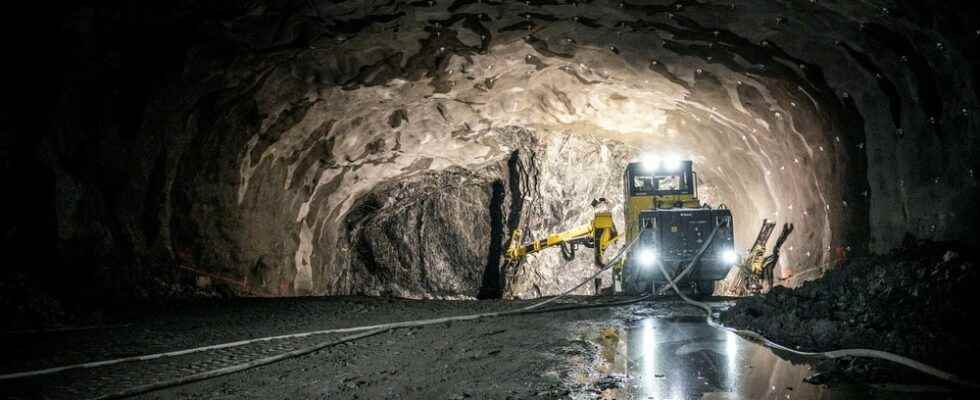The sun is shining over eastern Södermalm. It is one of the first real summer days of the year. At the same time, 100 meters down in the bedrock, right below Stigbergsparken, it is refrigerator cold and humid. Here, the giant hall was dug that will house the platform for the Sofia metro station.
It is not a particularly cozy environment. A pungent odor of ammonia hangs in the air. It’s gas from last night’s blast.
A four-armed drilling rig as big as a townhouse gives off a deafening roar. It eats into the rock and creates hundreds of long, narrow holes. Liquid explosives are then placed in the five-meter-deep holes. And so the work, around the clock, advances in building the world’s second deepest metro station.
– We work in several tunnels at the same time and in total we move forward between 30 and 40 meters a week, says Richard Lindholm, one of the construction managers who is our guide for the day.
When Sofia is completed in 2030 it will reach 14 meters further down the mountain than Skatteskrapan is high. Only the Arsenal in Kiev’s metro network are deeper. The Ukrainian station, which during the Russian invasion created headlines as it served as a shelter, is located 105.5 meters below the ground.
Friends of great bragging statistics may be wondering why the Stockholm Region did not decide to dig another bit and break the world record. But Richard Lindholm states that the smallest small meter costs a lot of money.
– I think that the traffic region councilor Kristoffer Tamsons usually answers that question well, he points out that we should be afraid of taxpayers’ money.
The reason why Sofia anyway built so deep is about Saltsjön. The tracks will go underwater to Norrmalm and connect to the station Kungsträdgården.
– We want some mountains between the water and the tunnels. Then you get far down and the trains can not go at any steep angle. In such a situation, escalators also become a very difficult alternative, Richard Lindholm continues.
At present, an 800-meter-long working tunnel is the only way down to the platform space. But in 2025, a 20 by 20 meter shaft will be taken up. Huge high-speed elevators will be installed here. At a speed of four meters per second, they will transport 40 passengers to and from the platform. A single trip takes just over 30 seconds. The corresponding trip with an escalator would take about 20 times longer. Elevators are also not as space-consuming at ground level, which is crucial in a densely populated metropolitan environment.
Richard Lindholm tells that an additional approximately 50 meters of rock must be blasted away before the platform space reaches its full length of 200 meters. In total, about a quarter have come with the work. That it happens at a depth of about a hundred meters may seem dramatic, but it has its advantages, explains Richard Lindholm.
– We are pretty good here because we are so far down. Several other stations are much closer to the ground and then you disturb people more. The requirements regarding vibrations and noise are extremely high. The risk that those values become high decreases the further down you go.
Facts. Sofia Station
From Kungsträdgården, the metro’s blue line under Saltsjön is extended with station Sofia as the first station. The plan is for it to open in 2030. The Stockholm region estimates that around 35,000 passengers will get on and off the metro here every day. They get to and from the platform via eight high-speed elevators. Each elevator has room for 40 people. The entrance to the station is being built in Stigbergsparken on Södermalm.
South of Sofia, the metro splits, one line goes towards Söderort and the other towards Hammarby Sjöstad with the terminus Nacka.
Show more
Read more:
Unknown giant center is the heart of Stockholm’s metro
2022 will be the big construction year for the new metro in Stockholm
